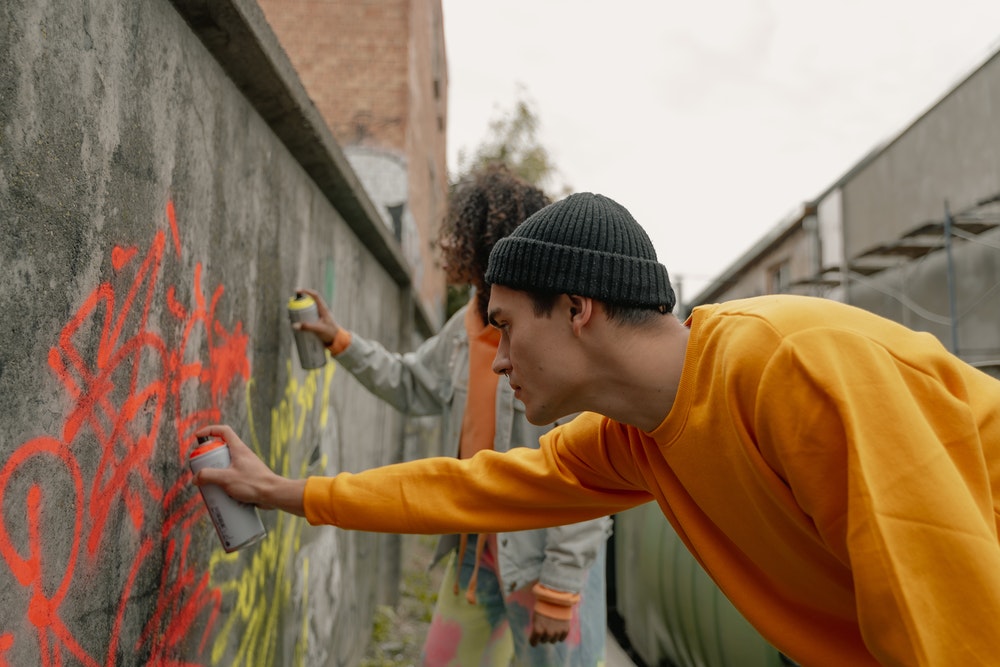We explain the long and detailed history of graffiti art, and why as a culture of its own, it is to be respected. We give more context to this street art form.
What is Graffiti Art?
Graffiti Art is a long and somewhat obscure term that covers a wide range of visual art forms and methods. Some of these art forms are more widely recognised, while others, not so much.
As the art form has evolved and evolved, the origins of Graffiti Art, to be precise, have come from its precursor. Contemporary graffiti art was first seen and painted on buildings during the late 1940s and 1950s, especially in New York City, however it started two thousand years before.
The Significance of Graffiti Art
Graffiti art has had a significant impact on society in the 20th century. These street artists have used their creativity and skills to leave lasting messages for anyone that wishes to read them. These different types of graffiti art and Street Art have gained notoriety over time.
The subject matter of the graffiti have also been increasingly seen to be more politically relevant.
Ancient graffiti
Graffiti began before recorded history. Archaeological evidence suggests that hieroglyphics were used in Egypt as early as 3500 BC. Early examples of graffiti were written in letters made of coloured pigments applied to walls with a paintbrush.
Archaeologists discovered the remains of a small primitive stencil called a hand stencil in 2009. The oldest known example, discovered in an ancient Egyptian tomb, dates to around 3400 BC. These stencils were left by ancient artists as a form of expression and a way of marking their territory.
This also allows us to link this ancient practice to ancient graffiti and to other art forms such as graffiti and street art.
Graffiti art in the Middle Ages
Many works of art during the Middle Ages (1100-1500 AD) were left anonymously. This is perhaps best exemplified in the work of a 15th Century monk called Gerard Planches, who designed many beautifully decorated cathedrals throughout Europe.
His own homes were richly decorated, but he also left his mark on the outside world through his graffiti. Gerard was commissioned by the Archbishop of Reims to paint on the exterior of the Church of St-Merri in Rheims. The cathedral’s entrance was bare, and in order to mark it in the Gothic style, he added the signs of the Apocalypse and the Apostles.
He also left signatures of his own, which can still be seen. This graffiti is still in place today, though it has been “pigmented” – meaning it’s now a pale green.
Graffiti in the Modern Era
In the streets of Tokyo, London and Paris, modern graffiti artists have been creating and building the scenes for themselves.
From Mickey Mouse and Pikachu, to Donald Duck, Batman and Superman, there’s been a surge of super hero related graffiti going on across the streets of the world.
In 1945, a sailor on leave from World War II had the idea of using the car bumper as a canvas. One can only imagine the technological revolution that would occur over the next decade. Then graffiti came to the attention of artists from all walks of life. There are plenty of modern movies and books, including even graffiti sketchbooks, that now line shelves of bookstores and the like. Street artists have often been affiliated with radical political movements. A commonality that has been followed up on by social justice activists.
The Graffiti Tour in New York City, sponsored by the Adventure Society, helps those interested in graffiti get an introduction into the world of street art. Graffiti Class at Garden State Art Institute Learn the history of street art and the trade of graffiti artistry.
Why is Graffiti Important To Us?
Graffiti is important to us because it is a reflection of who we are, and helps us to explore how to express our creativity. It also sends a message of a creative way of sharing our thoughts with others and provides a creative outlet for us to express our emotions, thoughts, and emotions. It is a way of expressing oneself through the use of a different medium than normal.
The meaning behind graffiti is of a specific language, not using words. The meaning is literally hidden, and it is there to show you that there is a message behind every piece of artwork. In the first 10 years of graffiti being taught in our schools, the crime rate actually went down in the United States.
Why Graffiti Is in Danger of Disappearing
The art form of graffiti has been challenged and is in danger of disappearing. This change in society has led to some negative perceptions about graffiti artists.
In recent times, the public has become increasingly vocal against these artists. The murals left by these artists have been attacked and stolen. And the criminals responsible for this are rarely brought to justice.
Conclusion
Let’s keep graffiti art interesting. Please make sure to appreciate the art form when you next see it on the streets.







